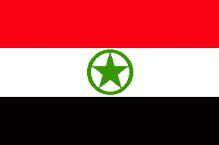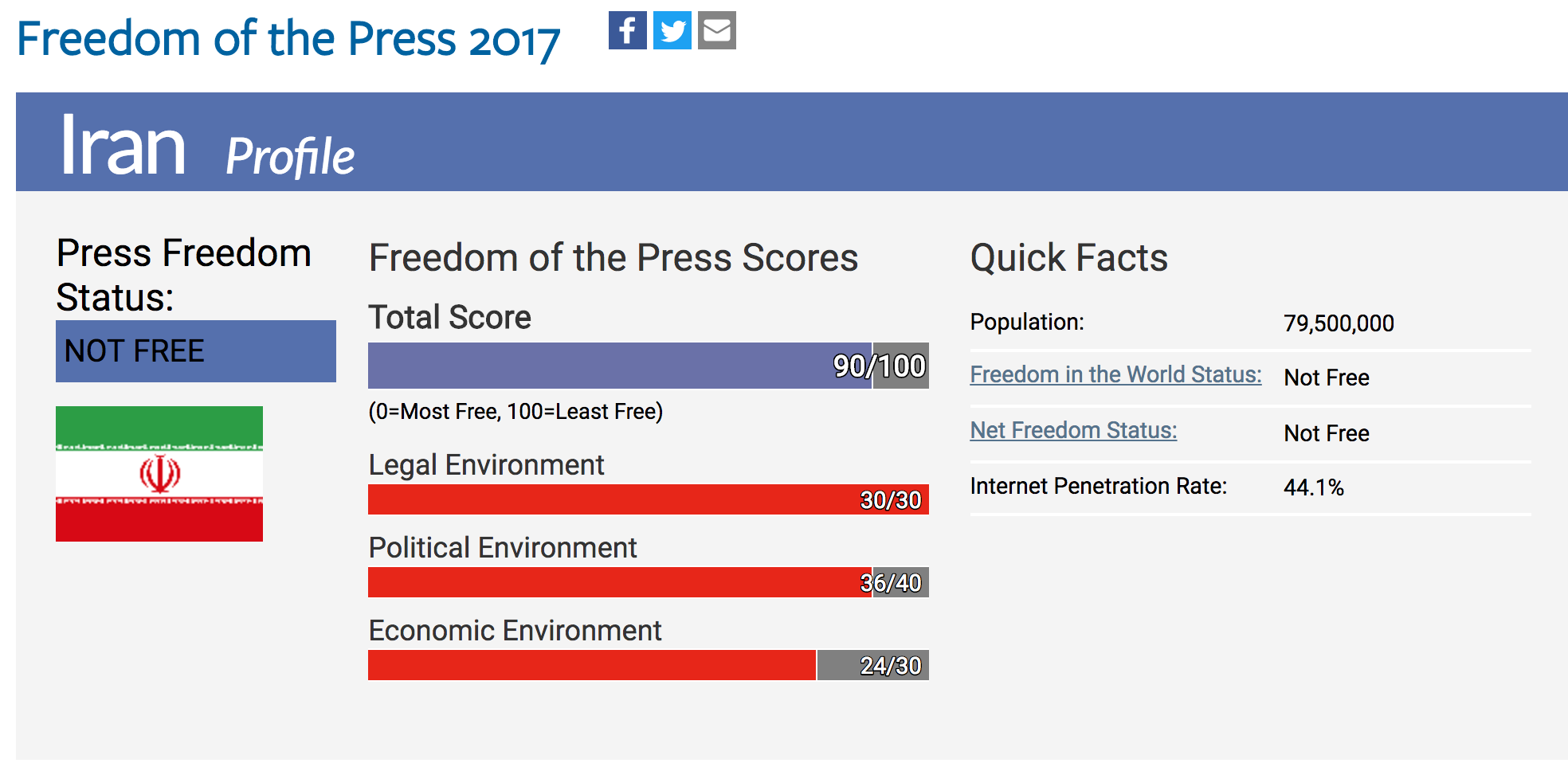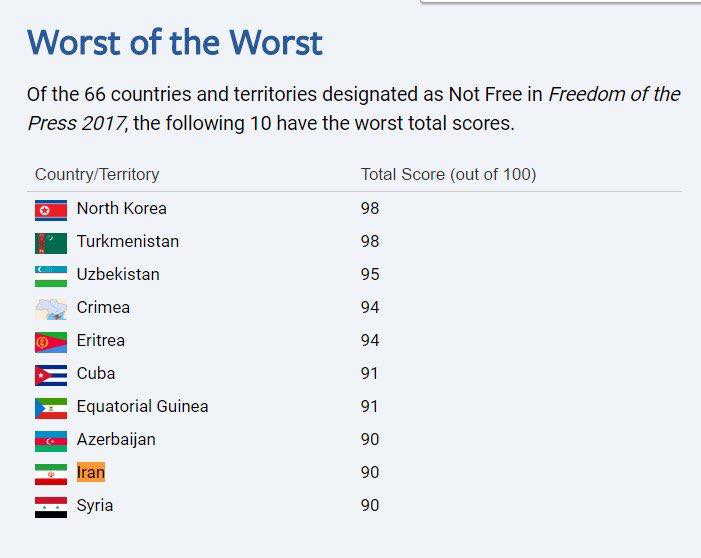Iranian regime is among the worst 10 countries in the world for its freedom of press according to freedom house report.
Key Developments in 2016:
- As of December, there were eight journalists behind bars in Iran, down from 19 in 2015 and 30 in 2014, according to the Committee to Protect Journalists. However, many others were arbitrarily arrested and released, or were free on bail and continued to face charges or restrictions on their ability to work.
- In April, Davoud Assadi, the brother of Paris-based Iranian journalist Houshang Assadi, was sentenced to five years in prison for acting against national security. The Center for Human Rights in Iran cited the case as an example of the regime’s practice of pressuring journalists living overseas by targeting their relatives.
- In June, the judiciary shuttered the reformist newspaper Ghanoon in response to complaints about critical coverage from the Islamic Revolutionary Guard Corps (IRGC). The paper, one of several outlets to suffer suspension or blocking in 2016, was reportedly allowed to resume publication later in the year.
Executive Summary
Conditions for the media in Iran are highly repressive. Certain topics—including criticism of the supreme leader, Ayatollah Ali Khamenei—are subject to long-standing redlines, enforced in part through harsh online and offline censorship. Journalists are silenced and forced into self-censorship through harassment, arbitrary detention, and prison sentences for vaguely defined offenses.
The situation has not significantly improved since the 2013 election of President Hassan Rouhani, who presented himself as a moderate. In fact, journalists in recent years have become victims of the tensions between the moderate faction of the Iranian establishment and powerful hard-liners who control key law enforcement institutions, with the latter asserting their authority by bringing cases against reporters on national security grounds. For example, four journalists who had been arrested by the IRGC’s intelligence unit in November 2015 received sentences of up to two years in prison after appeals in 2016; at least two of them engaged in hunger strikes while in detention.
In January 2016, Washington Post reporter Jason Rezaian—who had been in Iranian custody on trumped-up espionage charges since mid-2014—was released as part of a prisoner exchange with the United States that coincided with the lifting of sanctions under the 2015 international agreement on Iran’s nuclear program.
The authorities continued to formally ban popular online information platforms such as Facebook, Twitter, and YouTube in 2016. Although many Iranians accessed these services using circumvention tools, law enforcement officials and progovernment groups monitored their activity and worked to suppress critical or “immoral” content.
الاحتلال الفارسي من بين العشرة اسوء دول في العالم في حرية الصحافة وفقا لتقرير لمنظمة ” فريدوم هوس”.
Source: https://freedomhouse.org/report/freedom-press/2017/iran
























